5 Differences Between Hatch & Other Customer Communication Platforms
Learn what separates Hatch from other customer communication platforms, including campaign automation, targeted audience builds, and personalized...
Learn the benefits, best practices, and tools you need for an effective customer communication strategy that ultimately grows revenue.
96% of people base their loyalty to a brand on their interactions with it.
With increasing competition in the market, effective customer communication is no longer just a bonus; it's an essential element for success. The way you communicate with your customers greatly influences their decision to continue using your product or service.
In this article we share how better customer communication can benefit your business and then provide tips to build better relationships with your customers, foster loyalty, and ultimately drive business growth through improved communication.
Customer communication is the exchange of information between a company and its customers through various channels such as text, phone call, email, social media messaging, and in-person interactions.
Sales, marketing, and support teams use it to connect with, engage, retain, and support their contacts across the funnel, including leads, prospects, and customers. This is why creating an efficient customer communication strategy is crucial for your business—it builds strong customer relationships and loyalty, ultimately leading to business growth.

A well-defined customer communication strategy can help companies achieve several benefits, including:
Imagine a company that looks fun and promises approachability. Now, picture its customer communications reflecting that vibe—with informal language, emojis, humor in social media posts, plus friendly and helpful language in customer service interactions. That's what consistent brand messaging looks like, and it’s important for all of your marketing strategies.
A customer communication strategy ensures that a company's brand message resonates across all channels, creating a cohesive and recognizable brand identity. This consistency is powerful, fosters customer familiarity and trust, and lays the foundation for long-lasting relationships.
Effective customer communication is the lifeblood of customer retention. When your customers feel valued, respected, and heard, they're more likely to stick with you.
A customer communication strategy guides companies in proactively addressing customer needs and concerns. This includes prompt responses to inquiries, efficient issue resolution, timely updates, as well as personalized communications. By demonstrating genuine care and actively communicating with customers, companies can cultivate customer loyalty, reducing churn and building a loyal customer base.
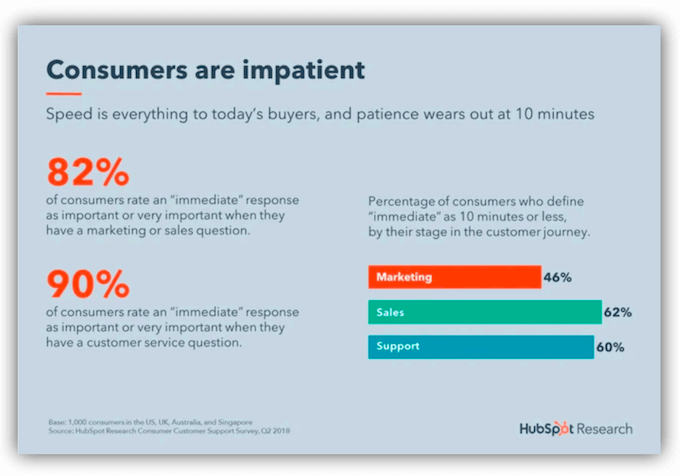
Positive customer communication is the cornerstone of a strong brand reputation. When customers have positive experiences, they become vocal advocates, spreading the word about the company's excellence.
An effective customer communication strategy emphasizes open and transparent communication. Actively seek customer feedback, maintain honesty in all interactions, address complaints promptly, and showcase your commitment to social responsibility. These practices build trust and credibility, enhancing brand reputation while also attracting new customers.
Effective customer communication is a potent sales driver. When customers trust you, they're more likely to open their wallets.
A customer communication strategy reaches potential customers through targeted email marketing, engaging social media content, customer testimonials, and attractive promotions. These strategies effectively convey the value proposition of your products or services, which helps you to stand out above competitors, drive sales, and ultimately increase revenue.
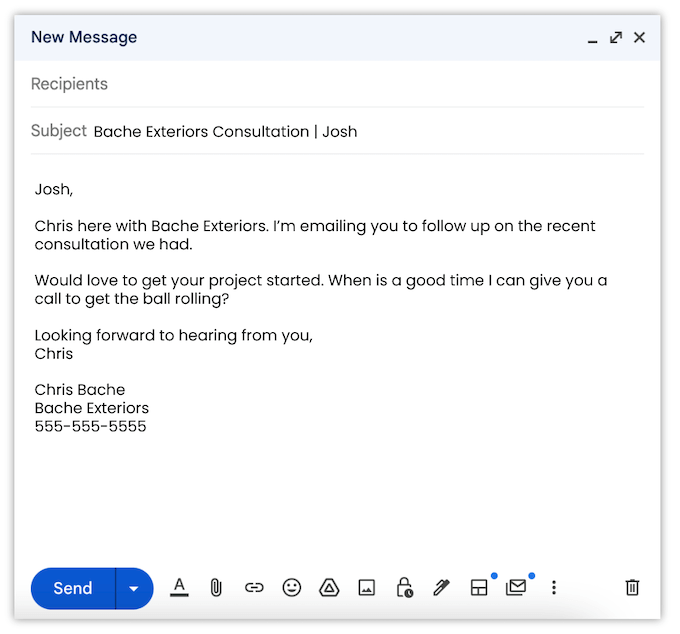
Customer communication is a necessity for your success and the digital era has created a multitude of channels for you to communicate with your customers. Here are six best practices to ensure you’re getting the most value out of those channels.
In today's digital age, customers have high expectations when it comes to how they interact with businesses. They want to be able to communicate seamlessly through different channels such as phone, text, email, social media, chat, and in-person interactions.
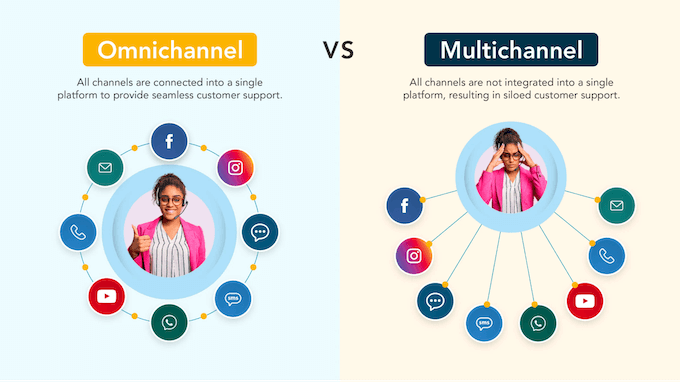
Omnichannel means that customers can easily switch between channels without losing any context or having to repeat their inquiries. This way, customers can reach you on their preferred channel at any given time, which improves the customer experience and can even boost customer retention rates by 89%.
Omnichannel tips:
When you personalize customer communication, it makes them feel valued and understood. This shows that you care about their individual needs and preferences.
To personalize messages, you can use their name, address their specific concerns, and offer tailored recommendations based on previous behaviors and purchases.
For instance, a remodeling company running a sale on flooring might segment its audience so that those who have had flooring done in the past get a different message than those who haven’t. It might say something like “Thank you for trusting us with your flooring needs in the past. We wanted to check in to make sure you’re still satisfied with them as well as let you know about a promotion we’re running.”
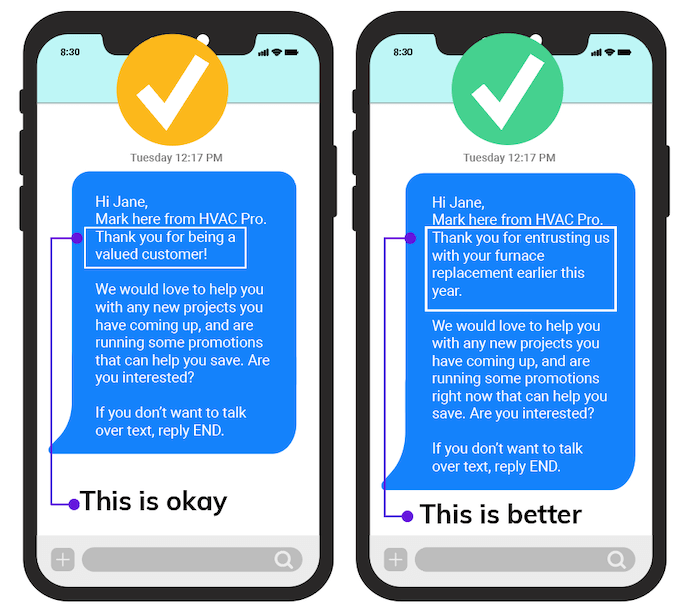
These personalized details allow your messages to better resonate with customers and show your attentiveness.
Personalization tips:
Gathering feedback from your customers regularly keeps them happy and strengthens your customer communication strategy.
Make sure to welcome both positive and negative feedback so you can gain valuable insights into customer satisfaction, identify areas that require improvement, and refine your communication approach.
For instance, consider sending a post-project survey to customers to gather feedback on their experience. This feedback can then be analyzed to identify areas in your sales and customer service processes that need improvement and enhance overall customer satisfaction.
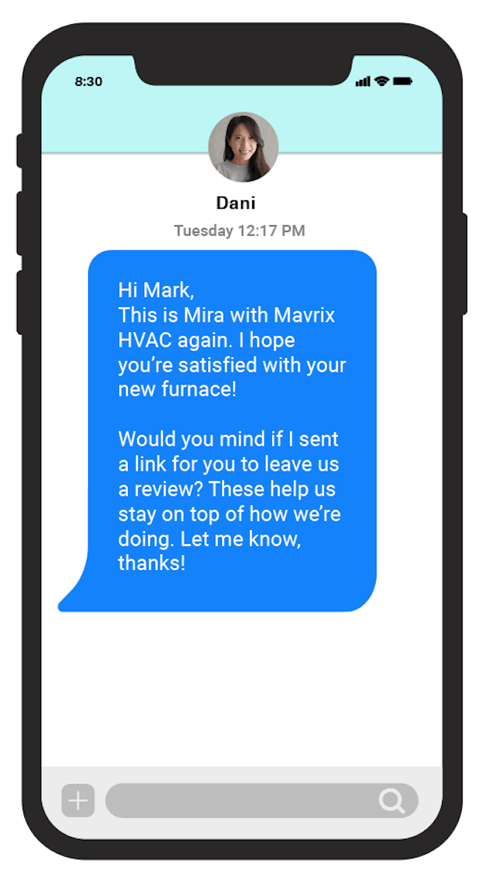
Feedback collection tips:
Investing in employee engagement initiatives can lead to a highly engaged workforce, which in turn can result in exceptional customer service. By creating a positive work environment, motivating your team, and giving them the tools to communicate effectively without burning out, you can increase employee retention and help your business thrive.
For instance, conducting regular employee satisfaction surveys and implementing recognition programs to celebrate positive performance can foster a culture of appreciation and encourage employees to go the extra mile for customers.
Employee engagement tips:
Self-service options are a key call center trend that gains more momentum every year. It is crucial to provide customers with the ability to solve their problems independently by giving them complete self-service options. These options could include knowledge bases, frequently asked questions, or tutorials.
Providing self-service options is also a great way to optimize your call center, as it reduces the workload of customer service representatives and allows customers to find solutions at their convenience.
For instance, you can offer a comprehensive knowledge base with frequently asked questions, tutorials, and videos that explain how to use your products and services. This self-help option will empower customers to manage their problems and complete tasks independently without having to reach out to a representative or wait for a resolution.
Self-service tips:

The Slack help center gives users their own means of finding answers to their questions. Image source
Regularly monitoring key customer communication metrics provides valuable insights into the effectiveness of your strategies and helps identify areas for improvement. Focus on metrics that align with your business goals and customer satisfaction objectives.
Example metrics to track are:
For home service businesses, these metrics are especially important:
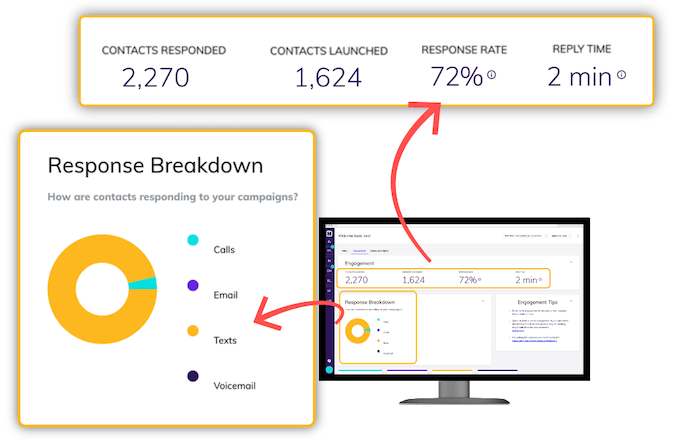
Tracking these metrics month-over-month, and even per rep, provides valuable insights into customer loyalty, satisfaction, and overall process efficiency, and will help you to ensure you’re getting the best ROI.
Here are AI and automation tools to help you cultivate effective communication with your customers and get the most value out of your conversations.
Customer communication platforms provide a centralized hub for managing interactions across multiple channels.
These platforms streamline communication by consolidating inbound leads, inquiries, customer data, and interactions into a single platform, eliminating the need to switch between multiple tools. This unified view of the customer journey enables businesses to provide seamless and personalized experiences. For help with finding the right tool, check out our post on what to look for in a texting platform.
Example:
Hatch: Hatch is a communication platform that allows businesses to automate personalized outreach for appointments, quotes, customer engagement, reviews, and other revenue-driving initiatives. With omnichannel messaging, best practice-backed templates, and generative AI to take on the grunt work, Hatch users increase response, set, and close rates using fewer resources—leading to higher revenue and lower costs.
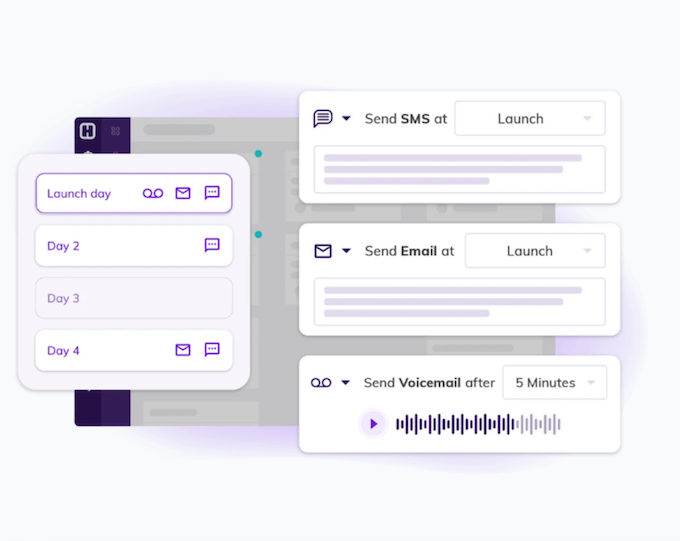
Live chat and messaging apps facilitate real-time interactions with customers, enabling businesses to address concerns promptly and effectively. By offering instant support, these tools reduce frustration, increase customer satisfaction, and demonstrate a commitment to responsive customer service.
Examples:
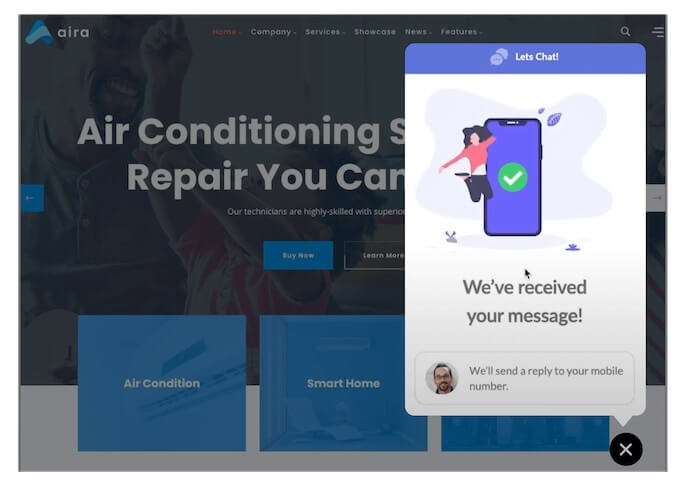
When it comes to managing and resolving customer issues, customer service ticketing platforms are indispensable. These platforms help businesses organize and prioritize tickets, ensuring that no issue goes unnoticed. This allows businesses to address customer concerns promptly, maintain a high level of responsiveness, and ultimately improve customer satisfaction.
Examples:
Customer relationship management (CRM) software acts as a storehouse for customer data and is equipped with the necessary tools to provide businesses with valuable insights into customer behavior, preferences, and needs. When CRMs are used correctly, businesses can customize their communication strategies by analyzing customer data, creating personalized marketing campaigns, and proactively resolving potential issues.
Examples:

Social media management tools help businesses manage their online presence, engage with customers, and address concerns. These tools provide insights into customer sentiment, allowing businesses to adapt communication strategies and enhance customer satisfaction.
Examples:

A strong customer communication strategy isn't just about sending out newsletters or responding to inquiries; it's about building a dialogue that fosters trust, understanding, and loyalty. It's about listening attentively to customer feedback, addressing their concerns promptly, and proactively anticipating their needs.
When customers feel heard, valued, and understood, they become more than just buyers. They become advocates, spreading positive word-of-mouth and fostering a loyal customer base. This fuels business growth by attracting new customers while retaining existing ones.
Learn what separates Hatch from other customer communication platforms, including campaign automation, targeted audience builds, and personalized...
Learn the 11 most important features contractors look for in a texting platform to achieve their business goals and maximize their investment.
Here are five reasons churned customers return to Hatch, from compliance and support to messaging infrastructure and AI.
Be the first to know about new sales and marketing insights to grow your messaging strategy with leads and customers.